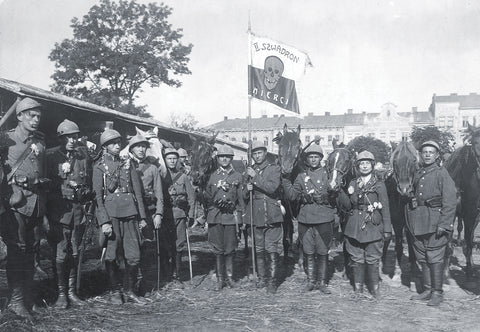
A Century Ago Russians and Poles Fought Over Ukraine. Here’s Why
The 2022 Russian invasion of Ukraine not only shocked the world but also evoked historical echoes of another conflict waged across some of the same ground a century ago. Fought primarily between the fledgling Republic of Poland and the recently proclaimed Russian Soviet Federated Socialist Republic, the Polish- Soviet War of 1918–20 contested disputed territories of the former empires of Austria-Hungary and czarist Russia. The Nov. 11, 1918, signing of the armistice that formally ended World War I had also annulled the Treaty of Brest-Litovsk foisted on Russia by the Central Powers in March. Vladimir Lenin promptly ordered Red Army forces westward to recover the German-vacated lands ceded by Russia under the terms of Brest-Litovsk. Lenin viewed Poland, newly restored after more than a century of Austrian, Prussian and Russian partition, as little more than a conduit through which the Red Army might enter Western Europe and foment communist revolutions. Meanwhile, Polish officials rushed to restore their nation’s pre-partition borders.
In 1919, while the Red Army was preoccupied with the Russian Civil War, Polish Chief of State Józef Pilsudski sent troops eastward to seize most of Lithuania, Belarus and western Ukraine. Meanwhile, in eastern Ukraine advancing Red Army troops pushed out the forces of the Ukrainian People’s Republic, compelling the latter to forge an alliance with Poland in April 1920. That month Pilsudski, resolving that military action was the best way to secure favorable borders, launched the Kiev Offensive, and on May 7 Polish and allied Ukrainian forces captured that vital namesake city. The Soviets responded with successful counterattacks that drove the Poles back to Warsaw.
The relentless advance of Soviet troops finally motivated the Western powers, which belatedly sent military aid, advisers and volunteers to Poland. Among the latter were Polish-American pilots of the Kosciuszko Squadron (7th Air Escadrille), comprising World War I veterans eager to repay their nation’s debt to namesake Continental Army Colonel Tadeusz Kosciuszko, the Polish military engineer and hero of the American Revolution. Poland’s defeat seemed certain, but in August the Battle of Warsaw (aka the “Miracle on the Vistula”) brought an unexpected and decisive Polish victory. The Russians had advanced with several large, poorly coordinated armies that the Poles—advised by such able French officers as General Maxime Weygand and young Captain Charles de Gaulle—managed to disperse in succession. In the wake of an eastward Polish counterattack the Russians sued for peace, and the war ended with an October 18 cease-fire.
Signed on March 18, 1921, the Peace of Riga demarcated the border Poland and Soviet Russia would share through the interwar period. Its terms split Ukraine and Belarus between the two, Lenin’s administration establishing the respective Soviets republics in its areas of control. Conducted chiefly by Pilsudski’s opponents and against his will, the peace negotiations ended with official recognition of the two Soviet republics, which became parties to the treaty. The disappointing outcome precluded formation of the Intermarium—a Polish-led federation of states Pilsudski had envisaged bridging the Baltic, Black and Adriatic seas.
Lessons:
The bigger stick doesn’t always bring victory. A well-led and -supplied underdog, such as Poland in 1920 and Britain in 1940, can snatch victory from the seeming brink of defeat.
Never underestimate a good defense. Patriots defending their home turf are difficult to defeat—witness the United States in 1776 and Ukraine in 2022.
Might does not make right. A nation defending its autonomy against an autocratic aggressor often reaps a wealth of international support, from the moral to the material, while delivering a whirlwind of consequences to invaders.
This story appeared in the 2023 Spring issue of Military History magazine.
historynet magazines
Our 9 best-selling history titles feature in-depth storytelling and iconic imagery to engage and inform on the people, the wars, and the events that shaped America and the world.
